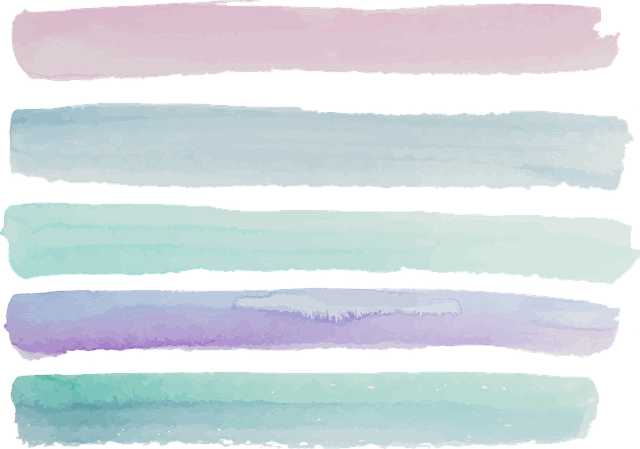Table of Contents
- Exploring the Timeless Beauty of Still Life Art
- Techniques that Bring Still Life Art to Life
- The Symbolism Behind Everyday Objects in Still Life
- Creating Your Own Still Life: Tips for Aspiring Artists
- Q&A
- The Conclusion


Exploring the Timeless Beauty of Still Life Art
Still life art has an enchanting ability to capture the essence of inanimate objects, transforming everyday items into visual poetry. Artists meticulously arrange objects—be it fruits, flowers, or household items—creating a composition that not only pleases the eye but also evokes a sense of contemplation. The careful selection of colors, textures, and forms contributes to this genre’s timeless allure, inviting viewers to pause and appreciate the beauty found in simplicity.
One of the remarkable aspects of still life is its versatility across different styles and historical periods. From the vibrant color palettes of the Baroque era to the more subdued tones found in modern interpretations, each artist brings a unique perspective to this art form. Notable artists such as Paul Cézanne and Vincent van Gogh have used still life to explore complex themes, blurring the lines between realism and abstraction. This evolution showcases not only the technical skills of the artist but also their emotional connection to the subjects portrayed.
When diving into the world of still life, it’s essential to consider the symbolism behind the objects chosen. Each element often carries deeper meanings, adding layers of narrative to the artwork. For instance, a vase of wilting flowers may represent the passage of time, while a bowl of fresh fruit can symbolize abundance and vitality. Here’s a quick overview of common themes and their associated symbols:
| Object | Symbolism |
|---|---|
| Fruit | Fertility and abundance |
| Flowers | Beauty and transience |
| Skulls | Memento mori (reminder of mortality) |
Ultimately, still life art not only serves as a visual feast but also as a vessel for introspection. It encourages viewers to reflect on their relationship with the world around them, reminding us to find pleasure in the mundane. Whether through the play of light across a shiny apple or the delicate petals of a flower, this art form weaves a narrative that transcends time, allowing us to connect with both the artist and our own experiences. As more contemporary artists experiment within this genre, still life continues to evolve, proving that beauty can be found in every corner of our lives.


Techniques that Bring Still Life Art to Life
Breathing life into still life art requires a blend of various techniques that engage not only the eye but also the imagination. Artists often start by selecting objects that speak to them, choosing elements with striking textures, vibrant colors, and diverse shapes. This not only sets the groundwork but allows the arrangement to create a narrative. Integrating unexpected items, such as a vintage clock alongside fresh fruit, can evoke curiosity and lead the viewer to wonder about the relationship between these chosen elements.
Lighting is another essential element that can transform a simple composition into a captivating piece. Manipulating natural light, or employing artificial sources, helps to create depth and evoke emotion. A gentle light source can cast soft shadows, enhancing the three-dimensionality of the objects. Consider experimenting with different times of day to observe how the shift in light affects the scene. Here are some tips for effective lighting:
- Use side-lighting to enhance texture.
- Soft, diffused light can create a serene atmosphere.
- Backlighting can generate an intriguing halo effect.
Composition is equally vital for energizing still life. Devising an intentional layout with a balance of space, line, and form can guide the viewer’s gaze through the artwork. Utilizing the rule of thirds or diagonal lines can direct attention and create tension within the piece. Additionally, including a focal point—like a vividly colored flower amid muted tones—invites deeper exploration of the entire composition.
| Technique | Description |
|---|---|
| Layering Elements | Stack objects to create a sense of depth. |
| Color Harmony | Select a cohesive color palette for a unified look. |
| Negative Space | Utilize empty areas to enhance focus on your subjects. |
incorporating texture can dramatically heighten the sensory experience of still life art. This can be achieved by choosing materials with contrasting surfaces—smooth fruits paired with rough, rustic pottery can add layers of interest. Additionally, employing techniques such as impasto or glazing in painting can make elements pop, pulling the viewer into a tactile understanding of the work.
The Symbolism Behind Everyday Objects in Still Life
In the realm of still life, everyday objects take on profound meanings, creating a visual narrative that transcends their mundane physical presence. Artists meticulously select elements such as flowers, fruit, and household items to convey deeper themes. For instance, a wilted flower might symbolize the passage of time or mortality, while a perfectly ripe fruit often represents abundance and the fleeting nature of beauty. Each object, chosen with intention, invites viewers to ponder the broader meanings lurking beneath the surface.
The arrangement of these objects further amplifies their significance. The use of light and shadow not only enhances the physical characteristics but also encapsulates emotional undertones. An illuminated apple, placed carefully on a dark table, can evoke feelings of desire or temptation, reminiscent of biblical references, while a scattered collection of items may speak to chaos or the disarray of life itself. In this way, the spatial relationships among objects can convey complex narratives without the need for words.
Moreover, the color palette used in still life can communicate various emotions and ideas. Bright, vibrant hues may suggest happiness and warmth, while muted tones can evoke feelings of nostalgia or sorrow. For example, a table laden with golden sunflowers and rich burgundy wine emits an aura of celebration and festivity, suggesting themes of conviviality and abundance. Meanwhile, a more subdued arrangement featuring gray tones and earth colors might provoke contemplation and reflection.
the cultural context of the objects depicted plays a pivotal role in unlocking their symbolism. Common items like bread, wine, and pottery have historical significance in many cultures, often serving as metaphors for sustenance and community. A simple loaf of bread can symbolize nourishment and the essence of life, evoking connections to family and tradition. The artistry of still life lies not just in the depiction of these objects but in the layers of meaning they accumulate through the lens of cultural interpretation.


Creating Your Own Still Life: Tips for Aspiring Artists
Creating a captivating still life involves more than just arranging objects on a table; it requires a keen eye for detail and a sense of composition. Start by selecting a theme that resonates with you. Consider using everyday items such as fruits, flowers, or even vintage collectibles. This not only adds a personal touch but also challenges your creative instincts. Remember, the combination of colors, shapes, and textures will play a significant role in how compelling your artwork becomes.
Lighting is crucial in fine-tuning your still life composition. Natural light works wonders, especially during the golden hour when the soft glow enhances the vibrancy of your subjects. Alternatively, you can experiment with artificial lighting to cast interesting shadows and highlights. Play around with different angles and intensities to find the most flattering illumination for your arrangement. Here are some tips for managing light effectively:
- Use reflectors to bounce light and brighten shadows.
- Adjust your setup throughout the day as light changes.
- Avoid harsh overhead lighting for softer shadows.
Once you’ve established your arrangement and lighting, consider the background. A clutter-free background allows your still life to take center stage. Using fabrics like linen, velvet, or a simple wooden surface can enhance the overall aesthetic without overwhelming the viewer. Feel free to create a mood by introducing colors that complement your objects. For a harmonious color scheme, refer to the color wheel:
| Color | Complementary Color | Best Use Case |
|---|---|---|
| Red | Green | Fruits and foliage arrangements |
| Blue | Orange | Contrast with warm earthy elements |
| Yellow | Purple | A bright, cheerful setup |
As you begin painting or drawing your still life, shift your focus frequently between your arrangement and your canvas. This practice enhances your observational skills and ensures your artwork captures the essence of the original setup. Don’t be afraid to adjust your composition or experiment with different mediums, such as oils, acrylics, or colored pencils. Each medium can offer different textures and finish, allowing your creativity to flourish. So grab your tools and let the art of still life reveal not just the beauty of objects, but also the depth of your artistic voice.
Q&A
Q&A: Exploring Still Life Art Pieces
Q1: What defines a still life art piece?
A: A still life art piece is a type of artwork that focuses on inanimate objects, often arranged on a table or surface. Common subjects include flowers, fruits, vegetables, household items, or any combination thereof. The essence of still life lies in its ability to capture the beauty of everyday objects, highlighting textures, shapes, and colors through careful composition and use of light.Q2: What are the historical origins of still life art?
A: The tradition of still life art dates back to ancient times, with early examples found in Egyptian tomb paintings. However, it gained prominence during the Renaissance when artists like Caravaggio and Juan Sánchez Cotán began to explore realism and intricate detail. By the 17th century, still life became a celebrated genre in Dutch painting, marked by rich symbolism and meticulous craftsmanship.Q3: What are the common techniques used in creating still life art?
A: Artists employ various techniques to enhance their still life compositions. Key methods include:- Light and Shadow: Effective use of chiaroscuro can create depth and dimension, making objects come alive.
- Composition: The arrangement of objects plays a crucial role in guiding the viewer’s eye and establishing balance within the artwork.
- Texture and Color: Artists often concentrate on capturing the unique textures and colors of objects, which can evoke sensory experiences and emotions.
Q4: How do contemporary artists approach still life?
A: Modern artists continue to experiment with still life, often blending traditional techniques with contemporary themes. Some may incorporate unexpected items, use mixed media, or explore abstract interpretations. This evolution reflects current societal themes, personal narratives, or critiques of consumer culture, showcasing that still life remains a dynamic and relevant art form.Q5: What is the significance of symbolism in still life art?
A: Symbolism plays a vital role in still life art, as objects often convey deeper meanings. For instance, flowers might symbolize transience, while certain fruits can represent abundance or decay. Artists carefully curate their selections to tell a story or evoke particular emotions, turning seemingly mundane objects into poignant reflections of life’s complexities.Q6: Can anyone create a still life piece? What are some tips for beginners?
A: Absolutely! Creating a still life piece is an accessible and fulfilling artistic endeavor. Beginners can start by selecting a few simple objects, ensuring good lighting, and experimenting with different arrangements. Here are some tips for getting started:- Choose a Focal Point: Select one item to draw the viewer’s attention.
- Experiment with Angles: Try different perspectives to find a more dynamic composition.
- Use Natural Light: Aim for natural light sources rather than harsh artificial ones to better capture colors and textures.
- Practice Patience: Still life can be time-consuming. Take your time to explore each detail!
